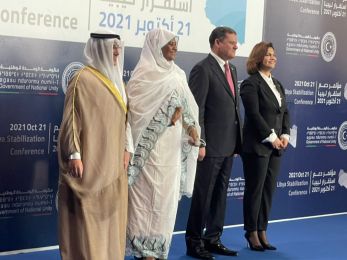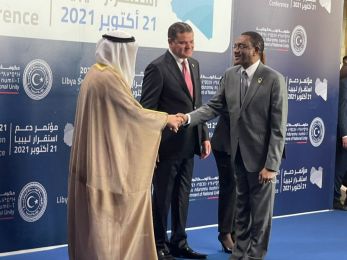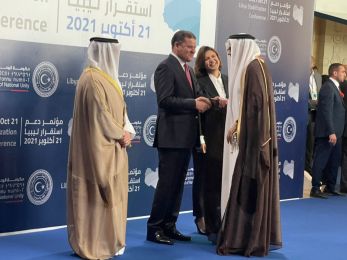Renewal of state of emergency a precautionary measure to avert a falling back into manslaughter (By Mohamed Osman Adam)
Khartoum, Sudan (PANA) - The Blue Nile State, near the borders with Ethiopia, on Friday renewed a state of emergency that gives security forces sweeping powers to deal with unrest in the region.
The Blue Nile was in the second half of 2022 the scene of violent communal fighting that left hundreds dead, injured and thousands displaced, bringing to mind the sorrowful events in Rwanda.
General Ahmed Al Omda, the governor of Blue Nile State, a region adjacent to Ethiopia and South Sudan borderlines, issued a decree extending the state of emergency, in place since July last year, for another 30 days, allowing police, Army and Rapid Support Forces, whatever it takes to maintain law and order and inhibit any attempt for a repeat of the fighting.
“Army Fourth Brigade Commander, the Police Director, Commander of the Rapid Support Forces, and the (regional) Director of National Intelligence Service, shall intervene using all available resources they have to prevent any tribal conflict and to impose state authority (law and order),” Governor Omda said in his decree.
The move is also in anticipation of preparations in about two months of the agricultural season, the time clashes usually occur between traditional Hausa farmers and the other Hamaj groups in the area, unless a final agreement was reached for peaceful coexistence.
The governor was quoted by the official news agency SUNA as saying these forces had the full mandate, legal and constitutional, to “take any necessary action, depending on the nature of any development”.
The conflict in the Blue Nile region started in the second half of 2022, pitching two African ethnic groups over dispute on historical traditional leadership rights which then developed into social unrest and widespread violence in the region.
When thousands of people, mostly women and children were driven out of their homes and hundreds of men were killed and injured, Sudan’s Federal Government intervened to restore order.
This followed local authorities having, among other measures, declared a state of emergency to allow the army and the Rapid Support Forces, use their power to quell the fighting and prevent it from spreading into major urban centers and neighboring states.
The hapless police alone could not restore order amid growing fears it might spill over to neighboring states and could develop into an experience Africa wanted to put behind its back, Rwanda’s Tutsi and Hutu genocide.
The fighting was between the Hamaj, historically residents of the Blue Nile area, and Hausa, Sudanese of West African origin, over land use and land traditional leadership authority and power.
Usually fighting occurs, as in the case of Darfur and the Nuba mountains in southwestern Sudan, between Sudanese of African origin and Sudanese of Arab origin or between nomads and sedentary farmers.
The two groups, Hausa and Hamaj, along with other tiny ethnic groups, have lived in the area for hundreds of years. The Hausa are usually active in farming and trade, while the Hamaj live on activities related to the forests, woods, fishing and the military.
The renewal of the state of emergency indicates that the situation is still tense as the hundreds of families that were displaced from their home areas in the Blue Nile region into the White Nile, Senar and Kasala state, have not returned to their homes.
The ingredients for further escalation are still there and the victims as usual are mostly women, children and elderly. The social media were awash of women amassed in schools and public areas in Sinja, capital of Senar State.
Social media unverified reporting, hate speech, political interests, and political impasse might push people into trying to take the law in their hands.
A United Nations reports issued at the end of 2022 stated that a political impasse and civil unrest have persisted since a military coup in October 2021, and the economy and basic social services continue to deteriorate.
A staggering 3.7 million people remain internally displaced and around 1 million refugees are living in the Sudan.
“Intercommunal violence, regional conflicts, wasting, climate-induced hazards and major epidemic outbreaks continue to affect children’s lives and well-being.”
A further devastating element is underdevelopment and lack of education in a region that has been at war since 1980’s when the now South Sudan was struggling to gain independence.
In 2005, South Sudan reached a peace agreement, the Comprehensive Peace agreement (CPA). But the CPA left the Blue Nile, Darfur and Nuba mountains regions still at war and paying the price for the continuation of conflict there.
Blue Nile, an example of the other areas, remains poorly underdeveloped, with high rates of illiteracy, malnutrition and lack of any tangible economic project.
But recent intensive hate speech and use of social media which engulfed many regions of the Sudan following President Omar Bashir’s ouster in 2019, spurred a limited clash resulting in all out attacks against the Hausa who were dubbed “outsiders”, some of the ingredients used by genocide advocates.
But social media, sometimes using images and pictures of conflicts in other areas of Africa, continued adding fuel to the fire and fanned the hatred.
The Blue Nile fighting started in Wad Al Mahi locality in mid-July 2002, displaced over 64,800 people as in the period July- October 2002, according to the UN and Sudanese local reports.
Intermittent fighting renewed on 13 October and continued up to 20 October leaving at least 150 people dead and 86 injured, medical sources were quoted by the UN as saying.
The local authorities once again moved in to quell the fighting that led to closure of local markets, displacement of thousands of civilians, mostly women and children to adjacent states in central Sudan and created a humanitarian situation.
The Hausa of the region, part of a huge group Hausa tribesmen, mostly hailing from Nigeria, Niger and Mali, settled in these areas before the advent of the Mahadist Islamic revolution, the first African freedom movement of 1881 and became a driving force within that movement and its ensuing tributaries.
However, after the British invaded the Sudan about 20 years later, they settled along with those crossing the Sudan into the Muslim Holy lands, in the arable rich areas of Gararif, Kassala, Gash Delta and Blue Nile area as well as Gazira agricultural project.
With the economic hardship and the rise of nationalism within today’s Sudan with ethnic groups and regions seeking to assert their rights and upper hand in each region before a government is in place, minorities tend to be the victim, be they minority in number or minorities in historical and cultural rights.
And as the saying goes, when two elephants fight, the grass suffers, children and women are the most vulnerable victims in the fighting in this region.
And although a prototype agreement on reconciliation was reached between leaders of the two groups late last year, tension remains high, and the initial groups of the internally displaced persons are still out of their home areas, though reports talk about them going back to urban areas and staying with relatives.
Until a few days ago, video footages showed women and children who escaped the fighting in Blue Nile region still camped in public buildings in some areas, reluctantly moving back to the region, at the insistence of officials that the situation was normal now.
In December 2022, the Representative of UNICEF in the Sudan, Mandeep O’Brien, told a Geneva meeting that in the Sudan “children are caught in a perfect storm of crises on top of crises".
In as many reports by the UN when the fighting was at its peak, children and women were among those mostly affected. In one such example, Save the Children said in a statement that it was deeply saddened and alarmed by reports of renewed conflict in Blue Nile region, Sudan, where two children were among at least 23 people who have died just over four days.
In just those four days, from 1 September to 4 September, some 44 people including 10 children have also been injured, and thousands displaced, with at least six schools supported by Save the Children being used to shelter those who have fled violence.
In the fighting that erupted in July 2022, the organization documented that 182 people were killed and more than 37,000 were displaced from their homes.
Arshad Malik, Country Director of Save the Children Sudan, was then quoted as urging all parties to exert all efforts to protect civilians from violence, especially the most vulnerable families and children, and to ensure that displaced communities are not forced to return to areas where they do not feel safe.
Reflecting a general feeling in the area, the Save the Children official has urged that “all efforts should be made to address the root causes of conflict in order to prevent such unrest in the future”.
Without a renewal of the state of emergency, there is fear that the same sad events might resurge once again as people would be preparing for the agricultural season a few months ahead.
-0-PANA MO/RA 24Feb2023






